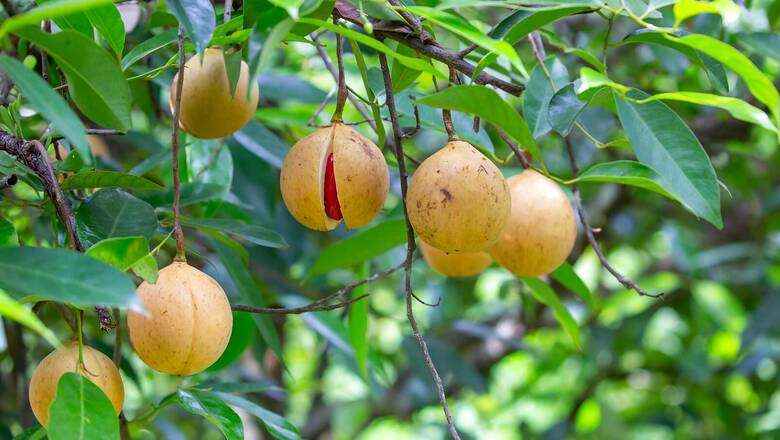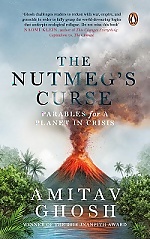
views
The Banda Islands sit upon one of the fault lines where the Earth shows itself to be most palpably alive: the islands, and their volcano, are among the offspring of the Ring of Fire that runs from Chile, in the east, to the rim of the Indian Ocean, in the west. A still active volcano, Gunung Api (“Fire Mountain”), towers above the Bandas, its peak perpetually wreathed in plumes of swirling cloud and upwelling steam.
Gunung Api is one of a great number of volcanoes in this stretch of ocean; the surrounding waters are dotted with beautifully formed, conical mountains that surge majestically out of the waves, some of them rising to heights of a thousand meters or more. The very name of the region, Maluku (which gave birth to the English toponym “Moluccas”), is said to derive from Molòko, a word that means “mountain” or “mountain island.”
The mountain islands of Maluku often erupt with devastating force, bringing ruin and destruction upon the people who live in their vicinity. Yet there is also something magical about these eruptions, something akin to the pain of childbirth. For the eruptions of Maluku’s volcanoes bring to the surface alchemical mixtures of materials which interact with the winds and weather of the region in such a way as to create forests that teem with wonders and rarities.
In the case of the Banda Islands the gift of Gunung Api is a botanical species that has flourished on this tiny archipelago like nowhere else: the tree that produces both nutmeg and mace.
The trees and their offspring were of very different temperaments. The trees were home-loving and did not venture out of their native Maluku until the eighteenth century. Nutmegs and mace, on the other hand, were tireless travelers: how much so is easy to chart, simply because, before the eighteenth century, every single nutmeg and every shred of mace originated in, or around, the Bandas. So it follows that any mention of nutmeg or mace in any text, anywhere, before the 1700s automatically establishes a link with the Bandas. In Chinese texts those mentions date back to the first century before the Common Era; in Latin texts the nutmeg appears a century later. But nutmegs had probably reached Europe and China long before writers thought to mention them in texts. This was certainly the case in India, where a carbonized nutmeg has been found in an archaeological site that dates back to 400–300 BCE. The first reliably dated textual mention (which is actually of mace) followed two or three centuries later.
Of this there can be no doubt, at any rate: nutmegs had traveled thousands of miles across the oceans long before the first Europeans reached Maluku. It was these journeys that ultimately brought European navigators to Maluku; they came because plant products like nutmegs had already traveled in the other direction, long before them.
As they made their way across the known world, nutmegs, mace, and other spices brought into being trading networks that stretched all the way across the Indian Ocean, reaching deep into Africa and Eurasia. The nodes and routes of these networks, and the people who were active in them, varied greatly over time, as kingdoms rose and fell, but for more than a millennium the voyages of the nutmeg remained remarkably consistent, growing steadily in both volume and value.
Apart from their culinary uses, nutmegs, cloves, pepper, and other spices were valued also for their medicinal properties. In the sixteenth century, the value of the nutmeg soared when doctors in Elizabethan England decided that the spice could be used to cure the plague, epidemics of which were then sweeping through Eurasia. In the late Middle Ages, nutmegs became so valuable in Europe that a handful could buy a house or a ship. So astronomical was the cost of spices in this era that it is impossible to account for their value in terms of utility alone. They were, in effect, fetishes, primordial forms of the commodity; they were valued because they had become envy-inducing symbols of luxury and wealth, conforming perfectly to Adam Smith’s insight that wealth is something that is “desired, not for the material satisfactions that it brings but because it is desired by others.”
Before the sixteenth century nutmegs reached Europe by changing hands many times, at many points of transit. The latter stages of their journey took them through Egypt, or the Levant, to Venice, which, in the centuries leading up to the voyages of Christopher Columbus and Vasco de Gama, ran a tightly controlled monopoly on the European spice trade. Columbus himself hailed from Venice’s archrival, Genoa, where the Serene Republic’s monopoly on the Eastern trade had long been bitterly resented; it was in order to break the Venetian hold on the trade that the early European navigators set off on the journeys that led to the Americas and the Indian Ocean. Among their goals, one of the most important was to find the islands that were home to the nutmeg. The stakes were immense, for the navigators and for the monarchs who financed them: the spice race, it has been said, was the space race of its time. Little wonder then that the nutmeg tree had brought Dutchmen like Sonck halfway around the world to the island of Lonthor.

Read all the Latest Opinions here




















Comments
0 comment